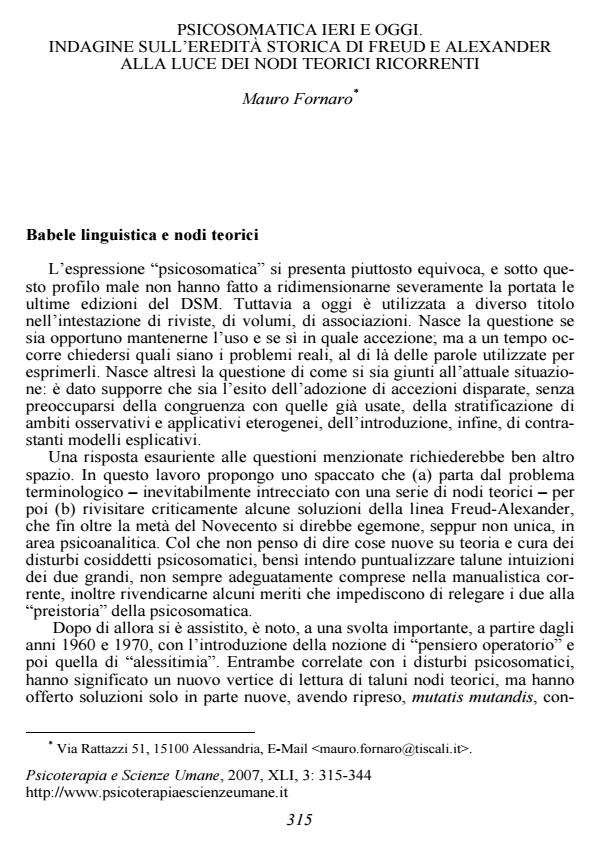Psicosomatica ieri e oggi. Indagine sull'eredità storica di Freud e Alexander alla luce dei nodi teorici ricorrenti
Journal title PSICOTERAPIA E SCIENZE UMANE
Author/s Mauro Fornaro
Publishing Year 2007 Issue 2007/3
Language Italian Pages 30 P. 315-344 File size 225 KB
DOI
DOI is like a bar code for intellectual property: to have more infomation
click here
Below, you can see the article first page
If you want to buy this article in PDF format, you can do it, following the instructions to buy download credits

FrancoAngeli is member of Publishers International Linking Association, Inc (PILA), a not-for-profit association which run the CrossRef service enabling links to and from online scholarly content.
Psychosomatics yesterday and today. a review of Freud’s and Alexander’s historical legacy in the light of recurring theoretical questions. ABSTRACT: The Author, after distinguishing the different meanings of psychosomatics and somatization, critically reconstructs the most qualifying aspects of the line of thinking shared by Sigmund Freud and Franz Alexander hegemonic in the psychoanalytic circles until the 1950s following six puzzling questions recurring in the history of psychosomatics. He discusses some less emphasized aspects in the thinking of Freud and Alexander, and furthermore points out beyond a linear development of the history of ideas the revival, mutatis mutandis, of fruitful insights arisen in another cultural context. Particularly, the specificity issue is questioned. Finally, discussing some indications that were virtual in Freud and actual in Alexander, he suggests to use today psychosomatics at most to mean the philosophical framework consisting in a holistic solution of the mind-body problem within a functionalist and adaptivist conception. [KEY WORDS: Alexander, emotion, Freud, holism, psychic causation].
Mauro Fornaro, Psicosomatica ieri e oggi. Indagine sull'eredità storica di Freud e Alexander alla luce dei nodi teorici ricorrenti in "PSICOTERAPIA E SCIENZE UMANE" 3/2007, pp 315-344, DOI: